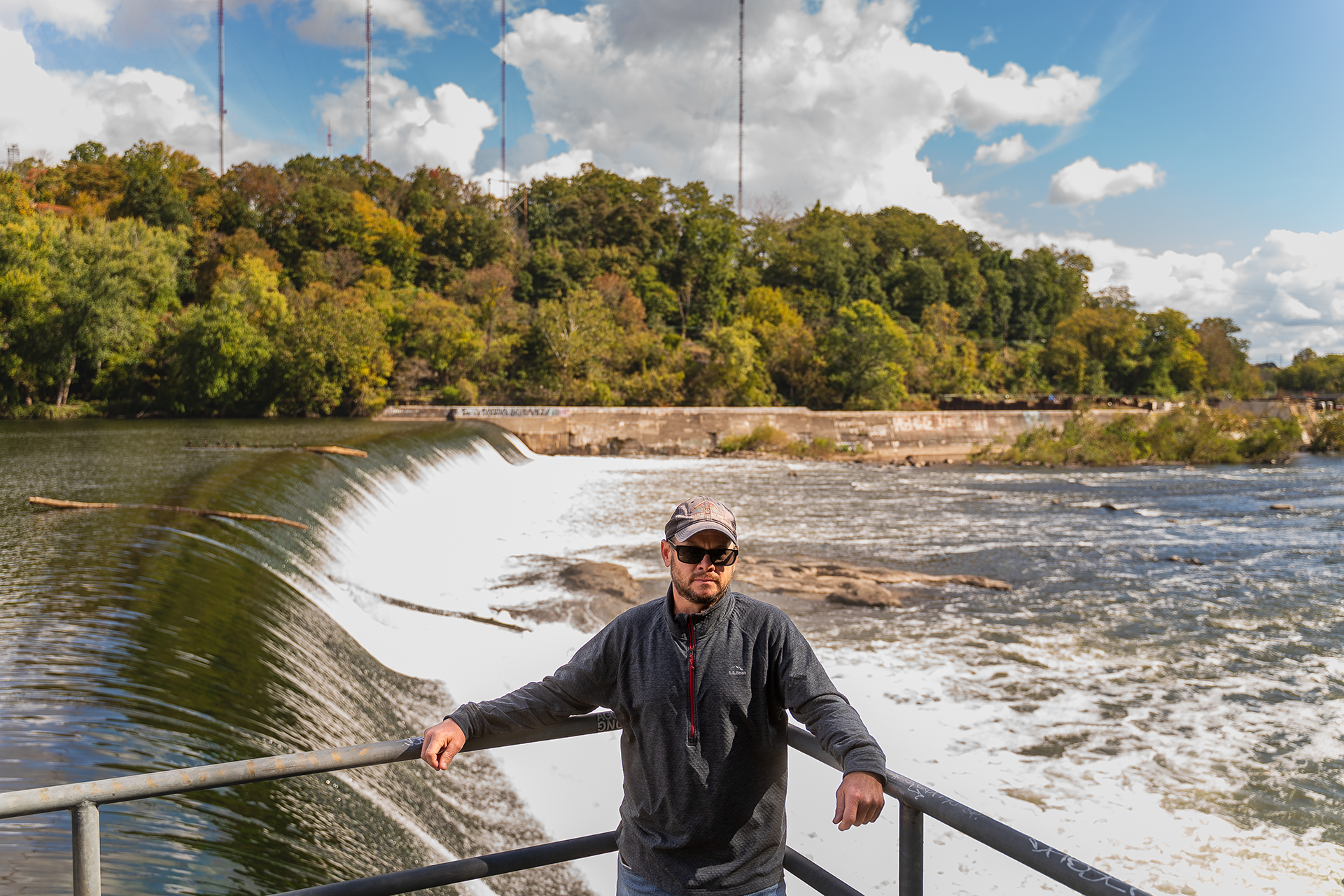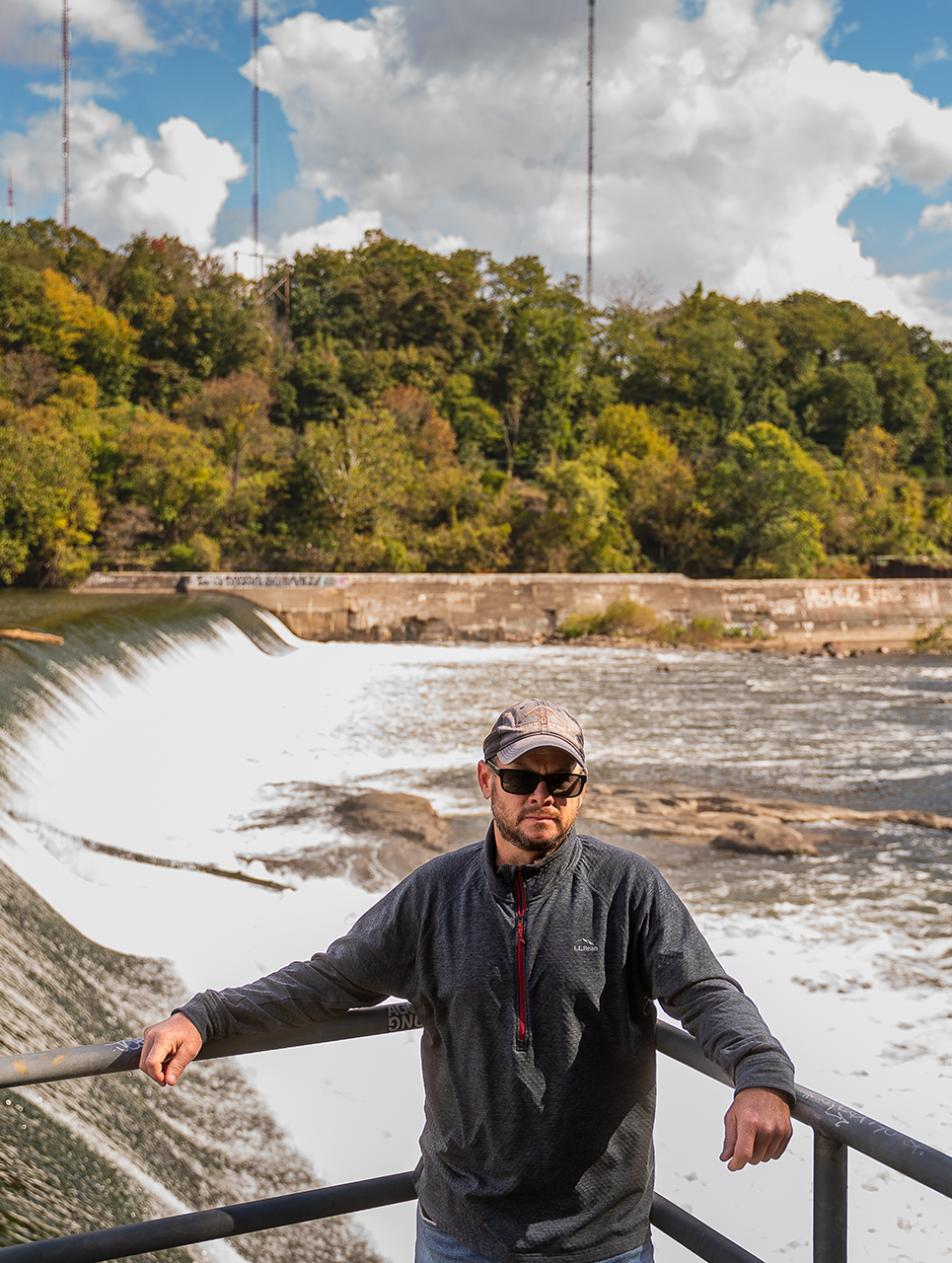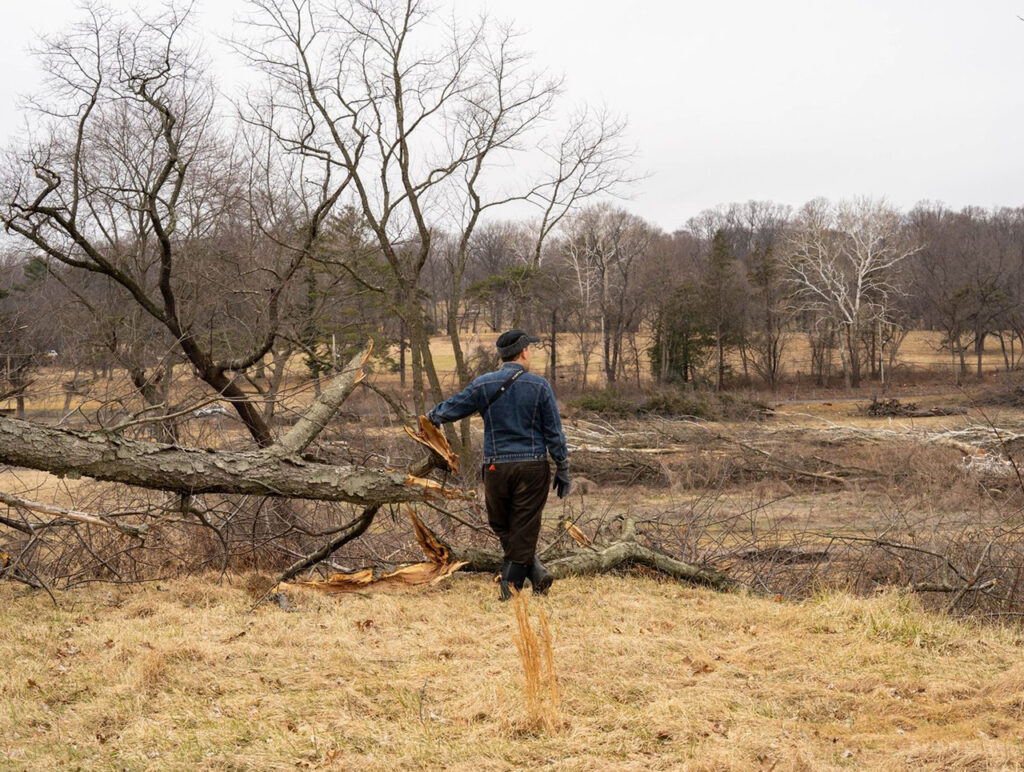In 2021, Ken Conly, director at large for the Philadelphia Canoe Club, was paddling a stretch of the Schuylkill River near the Flat Rock Dam north of Manayunk when he noticed something afoot.
A resident of nearby Andorra, Conly says that section of the river has traditionally been “neglected,” with trash accumulating along the river and people vandalizing aging brick and concrete structures that once made up the headworks of the Manayunk Canal.
“It’s an area that gets abused a lot and we’d paddle right through it,” Conly says.
But during this particular paddle, he saw that much of the area had been fenced off. It was evident something major was underway. Conly called around and eventually reached someone at the Philadelphia Water Department (PWD) who let him know what was up: the canal was coming back.
Last year, buoyed by $15 million in funding, PWD broke ground on a project to return flow to the two-mile-long canal for the first time since its closure in the 1940s. Those who’ve spent time on Manayunk’s Main Street know the consequences of that closure well. In sweltering summer months, the canal’s now stagnant waters can fill with algae and other materials, forming a stinky spine that runs alongside the otherwise tourist-friendly business district. And to the north along a wooded stretch of the Schuylkill River Trail, generations of mischief-makers have plodded their way across a muddy valley to graffiti the historic remains of the old canal works and engage in other activities best performed away from prying eyes.
Peter Reilly, an engineer for PWD, says the department has long dreamed of something better for the site. As a professional, he knew the water quality in the canal often drops, posing some risk to a drinking water intake just downstream in the Schuylkill. And personally, Reilly grew up in Mount Airy and admits to paying a visit to the dilapidated ruins now and then as a kid.
“When they really started to fall apart it became a safety hazard,” Reilly says. “At which point the real impetus arrived to kind of take the bull by the horns.”
Previously strapped for financing, Reilly and other PWD staff say an opportunity presented itself after the department was able to secure funding from PennVEST, a state-run low interest loan program.
The linchpin in the deal is improved water quality. A decade ago, the department spent $45 million without any state assistance to build a gigantic underground storage basin on nearby Venice Island to help control stormwater and sewage from running off into the Schuylkill. Now, the new state assistance will help PWD finish the job.

A breath of fresh water
Even after completion of the Venice Island project, water quality concerns remained for the canal, according to a public presentation delivered by PWD watershed scientist Luke Butler in February. Algal blooms “occur frequently” in the summer months, which have both “profound impact on water quality and aquatic organisms,” and also present taste and odor concerns for the city’s drinking water, Butler reported. Data from 2016 show extreme swings in the canal water’s oxygen levels; on a daily basis in the summer, levels drop below a critical threshold that can stress wildlife and even lead to fish kills.
According to PWD staff, restoration of the canal will lead to dramatic improvements. Contractors have already been at work clearing sediment from the old canal’s headworks, renovating a concrete wall channeling river water into the canal, and installing a new intake structure to pump water back into the canal. Once operational in the fall of 2024, the PWD says flow rates will increase from one to five cubic feet per second to 50 to 100.
“A molecule of water will flow through the canal in its entirety in six hours … not three days,” Butler calculated.
The resulting infusion of oxygen will lower algal blooms, lessen stress on aquatic species and even allow for the potential reintroduction of freshwater mussels, which were historically abundant in the canal works peppering the length of the Schuylkill into central Pennsylvania.
The department is also taking the opportunity to honor the canal’s history, preserving some of the walls of an old sluice house and large metal gears, while adding signage to instruct passersby on the ways of the past.
Philly really limits people [from] having access to the water … I’d think you’d want people to go down and see the water and be a little more friendly with nature, but instead they’re fencing it off.”
— Ken Conly, Philadelphia Canoe Club
Short falls?
While PWD is touting the canal project’s benefits to humans and animals alike, the plan also comes with muddier elements.
Asked about whether the project will have an impact on aquatic species like the red-bellied turtle — a species listed as threatened by the Pennsylvania Fish & Boat Commission — Reilly says a herpetologist has been on-site during construction to “manage the turtles.”
“We also have restrictions on when we can work because of their dormant seasons,” Reilly says.
In a permit application and approval materials issued by the U.S. Army Corps of Engineers, which has jurisdiction over the waters of the Schuylkill, potential ecological impacts were noted. Those included the “dewatering” of up to 0.8 acres of open water and emergent wetland in and around the canal, as well as 0.38 acres that will be “impacted” by new structures. However, the Corps did not state what subsequent impacts to aquatic life were expected. Other available materials do indicate there will be a “plunge pool” created at the outlet of the canal to assist the passage of migratory fish.
Conly, with the canoe club, laments the lack of public access to the area. PWD staff, citing liability concerns, say fencing around the new canal headworks will keep visitors restricted to the Schuylkill River Trail.
That doesn’t sit well with Conly, who wishes the City was doing more to use the opportunity to build in access to the river, especially to launch watercraft — perhaps even into the canal as well.
“I understand they don’t want people to spray graffiti … but at the same time I find it silly,” Conly says. “Philly really limits people [from] having access to the water … I’d think you’d want people to go down and see the water and be a little more friendly with nature, but instead they’re fencing it off.”









